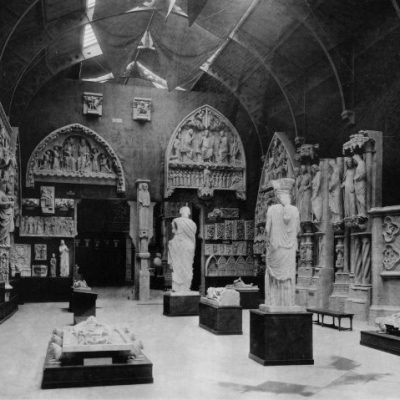In 2014, the Wu-Tang Clan, still Staten Island’s greatest contribution to modern culture (pace Pete Davidson’s dating history), had concerns about the music industry. The way they saw it, the march of digital technology was making music worthless – and that was when streaming was in its comparative infancy and Spotify was at 60 million users rather than the 600 million it claims today. The 31-track album they had been working on was to be a literal one-off. After a single copy of the 2-CD album was pressed, the digital master files would be deleted and the only evidence of their seventh studio album, which had been six years in the making, would be sold at auction.
Having imbued their home turf of Staten Island in New York with mystical significance right from the start of their careers, the collective was now trying to restore a sense of aura to music. The choice of album title, Once Upon a Time in Shaolin, made perfect sense: Shaolin standing in for Staten Island, reaffirming the collective’s commitment to Eastern philosophy and kung fu. (Readers looking for a fuller exegesis of a belief system might turn to RZA’s tract The Wu-Tang Manual of 2004, before opening his follow-up The Tao of Wu of 2009 or listening to ‘4th Chamber’, the best track on GZA’s solo effort Liquid Swords.)
The kings of Staten Island in c. 2000. Photo: Al Pereira/Michael Ochs Archives/Getty Images

In a statement announcing the existence of Once Upon a Time in Shaolin, the Wu-Tang Clan and their producer wrote: ‘By adopting a 400 year old Renaissance-style approach to music, offering it as a commissioned commodity and allowing it to take a similar trajectory from creation to exhibition to sale, as any other contemporary art piece, we hope to inspire and intensify urgent debate about the future of music.’
The album’s immediate future involved being bought for a reported $2m by Martin Shkreli, the hedge fund investor and pharmaceuticals executive who was later convicted of securities fraud. In 2018 he forfeited the album as part of his sentence, which included a seven-year-jail term. However, its current owner is the digital art collective Pleasr, which seems to be giving it an afterlife more in line with its creators’ intentions (although the Wu-Tang Clan have stayed silent on the subject). This month, as part of its ‘Namedropping’ exhibition, the Museum of Old and New Art (MONA), in Tasmania will be offering visitors the chance to listen to a half-hour mix from the album at a twice-daily listening event. Jarrod Rawlins, MONA’s director of Curatorial Affairs said, ‘Once Upon a Time in Shaolin is more than an album, so when I was thinking about new status, and what a transcendent namedrop could be, I knew I had to get it into this exhibition.’
Whatever happens on the ownership front, no copies of the album can be made or sold until 2103. Until then, a listening-party at a museum is probably the best bet for anyone wondering if it is any good. But your roving-far-into-the-future correspondent would like to propose an ideal permanent home for the album in the 22nd century. Visitors to New York (or residents of New York’s other four boroughs) may not have the Staten Island Museum high on their list of destinations, unless they are fans of cicadas (the museum has 35,000) or mollusc shells (a mere 10,000). Strangely, it doesn’t feature on Mysterious Island of Shaolin: The Wu-Tang Clan’s Map of Staten Island in Joshua Jelly-Schapiro and Rebecca Solnit’s marvellous book, Nonstop Metropolis – A New York City Atlas (2016). But, if sea-level rise hasn’t doomed New York’s unfairly forgotten borough by 2103, what better home could there be for a relic of what will surely be an entirely extinct music industry than a museum that contains exhibits as thrilling as ‘Remember the Mastodon’?




